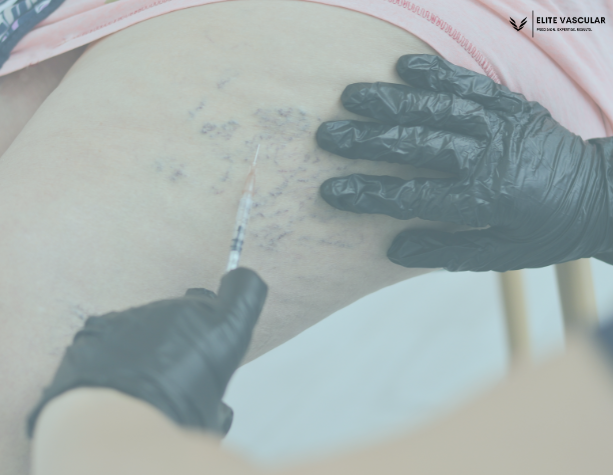- admin
- 0 Comments
DVT and varicose veins are not unusual sicknesses that many people are unaware of. While these situations may additionally appearance comparable, there are nevertheless differences. Women frequently have varicose veins, which can be abnormally huge and huge veins located inside the legs or feet. They may not show any signs, although some human beings may additionally experience pain and pain.
On the other hand, Deep vein Thrombosis (DVT) is characterized by deep vein rupture and DVT most commonly in the leg. This can lead to symptoms such as uncomfortable and swollen feet. In this article, we will describe main difference between Varicose Veins vs DVT.
Deep Vein Thrombosis Vs Varicose Veins
- DVT and varicose veins are leg muscle vascular diseases, however they vary. Most people think varicose veins are cosmetic, however DVT is a serious medical issue that needs immediate treatment.
- Chronic varicose veins may be painful but seldom life-threatening. Rashes and bleeding may result from varicose veins.
- DVT may be fatal if neglected. End-thoracic surgery may result from deep vein blood clots entering the lungs.
- Another difference is that varicose veins are the most common cause of varicose veins, whereas DVT is caused by a blood clot in a deep vein Varicose veins can be uncomfortable and painful , but rarely cause major health problems.
- However, there is an association between atherosclerosis and DVT. People with varicose veins are more likely to develop DVT. This is because the soft tissue in the vein causes blood to settle, increasing the chances of blood clots.
- Varicose veins can also increase the chances of DVT symptoms such as discomfort and swelling of the legs. This is because large veins can put pressure on the surrounding tissues, which can cause pain.
- The other aspect is that following recovery from DVT, patients can develop varicose veins, called as secondary varicose veins.
The connection between Varicose Veins and DVT
While varicose veins and DVTs are different disorders, they have a relationship between. Varicose nerves are a risk factor for DVT as they slow down blood flow to the veins, which increases the likelihood of becoming a blood clot.
When veins valves fail to work properly, blood can deposit in them, from which they can spread and turn. This can lead to venous inadequacy, thereby increasing the risk of DVT.
Individuals who have had a history of varicose veins or have a history of this disease in their family are also more likely to develop DVT. Other risk factors of DVT include obesity, smoking, pregnancy and immobility.
DVT and Varicose Veins Prevention and Treatment
Prevention and management of DVT and varicose veins vary. Stopping DVT includes reducing risk factors, such as avoiding sitting for a long time, maintaining a healthy weight and quitting smoking. People who are at a higher risk of DVTs, such as those who have had this disease before or have a medical condition that increases their risk may need to take blood thinning medications to prevent blood clots from developing.
To increase blood flow in the victim area often DVT is treated with blood thinner and compression stockings. In extreme situations, surgery or minimum invasive processes may be needed to remove blood clots.
Treatment of varicose veins can include lifestyle modifications such as exercise and weight loss, as well as compression stockings to reduce the size of the veins. In some circumstances, surgery may be needed to remove affected veins.
Prevention of DVT in patients with varicose veins is important to reduce the risk of life-fatal outcomes. People with varicose veins have several techniques to prevent DVT.
One of the most successful ways is to maintain a healthy weight and perform adequate physical exercise. Exercise helps increase blood flow to the veins, reducing the risk of becoming blood clot.
DVT and Varicose Veins (Difference)
While varicose veins and DVT both produce symptoms such as inflammation and discomfort in the leg, their appearance, risk factors and treatment vary considerably.
- From a visual view point of view, the most obvious difference is that varicose veins appear easily on the surface, while deep vinegar geography (DVT) is hidden inside deep veins.
- DVT, on the other hand, can cause external symptoms such as being red of the skin with inflammation or hot feeling in the leg that appears suddenly.
There are also significant differences in treatment choices between these venous diseases
- Many varicose veins may not require treatment beyond the use of exercise, repeatedly lifting and elastic compression stockings.
- Simple, light cases are treated as an external patient using minimum invasive laser, sclerotherapy, or radiofrequency ablation treatment to remove defective surface blood veins.
- The procedures seal and reroute circulation from defective vessels.
- On the other hand, DVT requires an immediate and accurately adapted drug diet, which often includes injections to reduce blood thickness quickly and start dissolution before the potential fatal clots are large and displaced.
- After DVT, aggressive oral blood thinning persists for months.
- Elastic stockings reduce edema but cannot remove clots.
- Based on the size of the clot, doctors may suggest surgical removal or injections that dissolve the clots to break the clotting rapidly.
Conclusion
Deep vein thrombosis and varicose veins are both vine disorders; yet, both symptoms are quite similar, and you can misinterpret them. If you find out the discomfort in the leg, swelling, or changes in the colour of the foot veins, seeks medical help immediately. You should meet a professional doctor and share all your problems. Prompt treatment can guarantee you’ll have no inconvenience anymore and there won’t be any dangerous problem. Avoid self-medication, because this can increase these two diseases.

